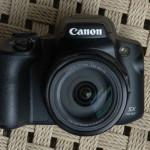
OUR VERDICT
With an improved processor and trackpad, not to mention room for more RAM now, if you can get past the lofty price tag – even as an Apple fan – then prepare to enjoy what’s surprisingly the best MacBook in years – Pro or otherwise.
FOR
- Updated processor
- Vastly improved keyboard
- Still delightfully compact
- Long battery life
AGAINST
- Still only one USB-C port
- Poor audio and webcam
- Still too pricey
When the original MacBook launched way back in 2006, everyone praised it as an affordable alternative to the MacBook Pro laptops. Its role has shifted, however: the 2016 Apple MacBook transformed into a 12-inch ultra-premium and ultra-portable notebook, and the 2017 model carries out that change.
The Apple MacBook features a gorgeous Retina display, for example, which makes the price fall between the MacBook Air and the MacBook Pro. This Retina display signifies that there are so many pixels that they’re invisible to the naked eye, according to the late Steve Jobs.
And, it may have been effectively replaced by the MacBook Air 2018, but the 12-inch Macbook we reviewed here is still worthy of your attention. Thin, light and inalterable, it’a classic Apple design through and through, and it’ll draw plenty of envious looks from your fellow coffee shop patrons. However, thanks to the MacBook’s high-class design, it’s still an expensive device.
Price and availability
You’ll be able to find the MacBook we reviewed here on the shelf of your local Apple Store (or Amazon) for $1,299 (£1,249, AU$1,899). That’ll get you everything found under our hot pink spec sheet.
For the time being, should your lavish taste necessitate a more powerful 12-inch MacBook, there are higher tiers to choose from.
One version of the MacBook, for instance, comes with an Intel Core i5-7Y54 and 512GB of SSD space instead of the base model’s 256GB. It’s still fanless, so we wouldn’t bank on speeds quite as fast as the cheapest MacBook Pro, but does come to a grand total of $1,599 (£1,549, AU$2,349).
If you want to max out the Apple MacBook, it’ll set you back a whopping $1,949 (£1,864, AU$2,909) for an Intel Core i7-7Y75 CPU and 16GB of RAM backed up with a 512GB PCIe SSD.
Keep in mind that these are dated processors in 2018, with 8th-generation chips having launched in the latter half of 2017. If you want the latest fanless silicon, you’ll have to opt for the MacBook Air 2018.
Over on the Windows end, one of the most technically comparable laptops is the Acer Swift 7, an Ultrabook seemingly handcrafted to go toe-to-toe with the MacBook. This one starts at $1,099 or £999 (about AU$1,449) for a similar Core i5 Y-series CPU with matching storage and RAM as well as a Full HD, 13.3-inch display. Or, maybe even the Asus ZenBook UX310UA, which you can find for around $699 (about £525, AU$920) for a beefier U-series processor and the same amount of storage and RAM.
On the Chrome OS side, there’s Google’s flagship Chromebook, the Pixelbook, starting at $999 (£999, AU$1,499) with a more powerful Intel Core i5 CPU and the same RAM, but half as much SSD space as the top-end MacBook.

Design
Honestly the look and feel of the 12-inch MacBook frame really hasn’t changed much since last year’s model, which isn’t totally a bad thing. Coming in space gray, silver, gold and rose gold, the brushed aluminum fells just as cool and pristine as it has on Apple laptops for years.
And, the MacBook’s thinness and feathery weight is still impressive to the point that its dimensions are one of the major selling points of the laptop.
That said, an even more narrow screen bezel or just one more USB-C port would be blessings upon the design at this point.
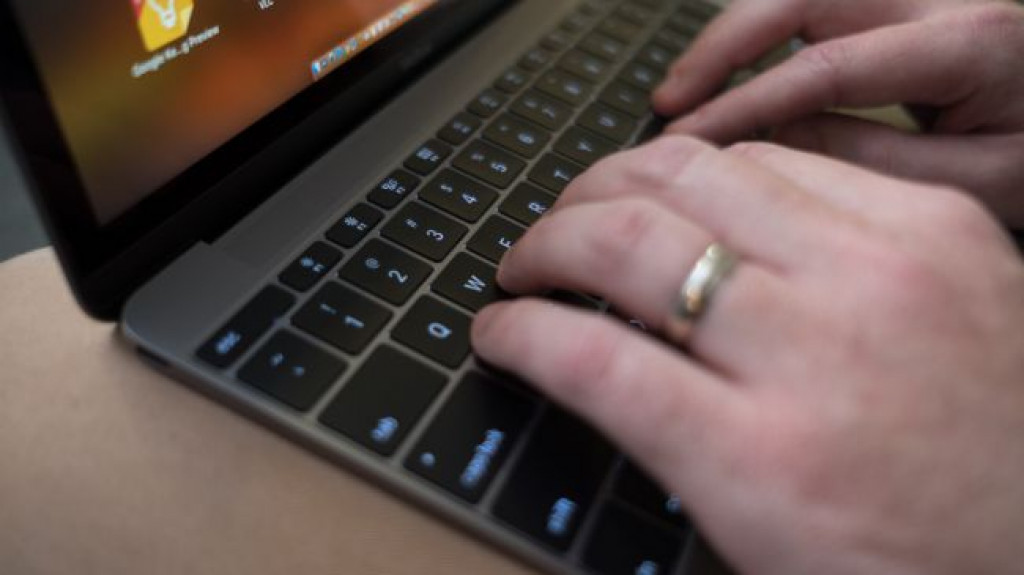
One major improvement upon the 12-inch MacBooks of yesteryear is the refined butterfly switches that comprise the new backlit keyboard. Travel doesn’t feel any deeper, which isn’t great, but feedback is much stronger and more forceful, improving the quality drastically.
The MacBook’s wide, glass-coated trackpad remains the same since last year, meaning it’s just as pleasant to use as it’s ever been. Apple’s touch interface tech through both software and hardware remains virtually unrivaled.
We say ‘nearly’ because Google may have well caught up to Apple with its Pixelbook. Seriously, the keyboard and trackpad on that thing are ones to be imitated.
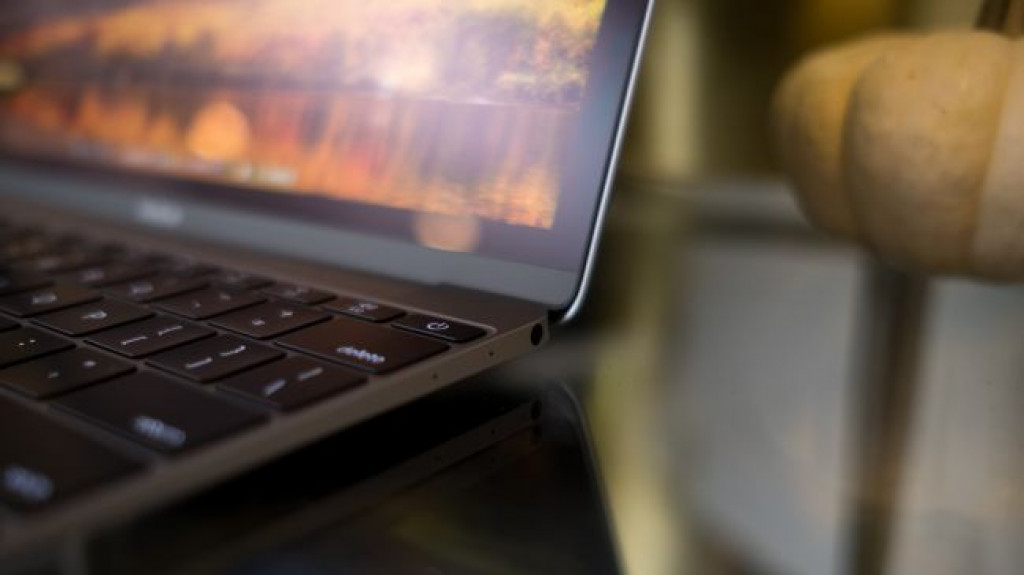
Display and sound
We all know that Apple has prided itself on its displays for years, and with good reason. The 12-inch MacBook’s screen remains unchanged since the dawn of the product in 2015, which is just fine. Editing photos and doing graphically intense work looks amazing on the Retina display, but it’s not the sharpest screen in school anymore.
Plus, the MacBook’s 16:10 aspect ratio may just be weird enough to be annoying sometimes, like when watching movies or editing images that are formatted to 16:9 in fullscreen mode.
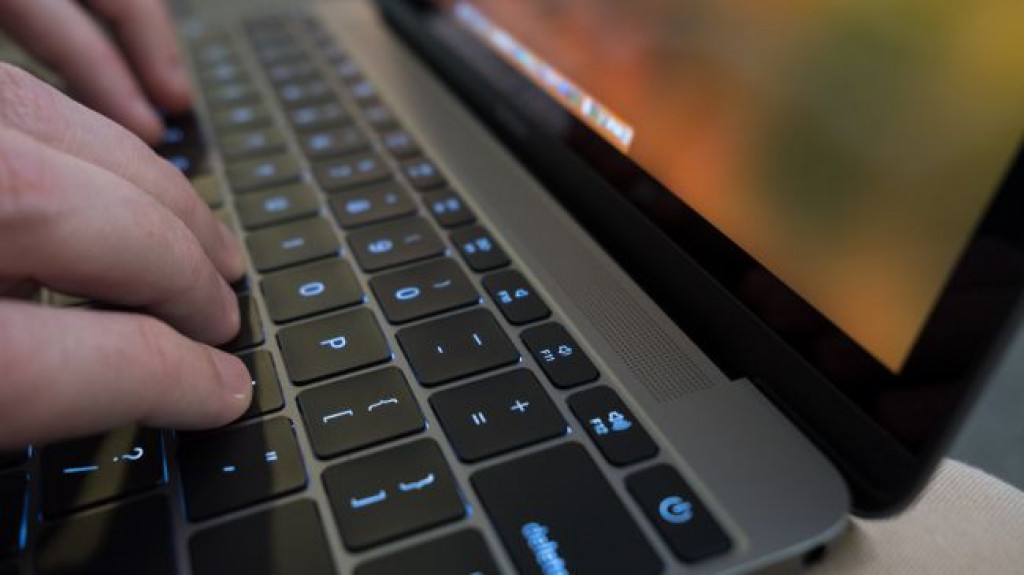
As for how the MacBook sounds, the four stereo speakers toward its hinge can certainly pump out some loud tunes. Still, like all notebooks with mere millimeters to work with for audio chambers, the sound is a bit thin and tinny, with some channels in songs just getting lost outright.
Still, you’re not going to get much better audio from any laptop near this thin. Thank heaven that Apple hasn’t pulled the headphone jack from the MacBook.
While the 12-inch MacBook still uses an M- or Y-series Intel processor, this doesn’t mean much to the average consumer. It’s powerful enough to handle anything that many everyday users are going to throw at it – even some light photo editing. However, it likely won’t be very successful at video editing.
During our time with the Apple MacBook 2017, we didn’t run into any slowdown or chugging with more than 20 Chrome tabs open at the same time. Keep in mind that these tabs were generating everything from text editors, spreadsheets, streaming music and even live chat.
Because we’re stacking the MacBook up against a laptop that runs Chrome OS and one that released early in the year, before we adopted the Geekbench 4 test, straight comparisons in the numbers would be a fool’s errand.
What these numbers should tell you is that this laptop is more than capable of handling basic tasks and even some advanced ones, like Java-based graphical map generation.
That said, don’t be surprised to see this laptop get spanked by those equipped with full-fat, mobile U-series Intel processors.
When you stack those stark differences with the arguably minimal gains in weight and thinness that those laptops present, it’s hard not to question the price of such an admittedly gorgeous device.
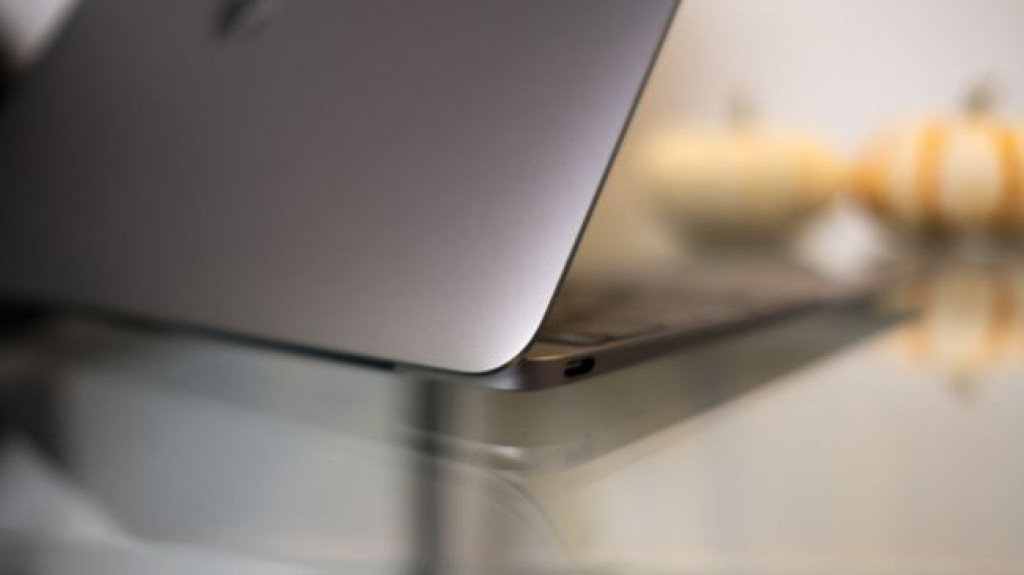
Battery life
The Apple Macbook still beats out most of its rivals in pure longevity, reporting a battery life score in our TechRadar Battery Life Test of 8 hours and 4 minutes. That’s nearly a half hour longer than the Pixelbook, and nearly three hours longer than the 2017 Acer Swift 7.
Of course, that’s unsurprisingly far below Apple’s battery life claims of up to 10 hours wireless web browsing or up to 12 hours iTunes movie playback. Regardless, it’s well beyond what most Ultrabooks of this year have reported in our test, which sets screen brightness and audio volume to 50%, as well all other back lights and radios off save for Wi-Fi.

We liked
This year’s MacBook sees vast improvements to the keyboard, especially in feedback strength, making typing on it far more delightful and accurate.
The sheer thinness and lightness of the device is still an impressive feat, and the gains in processor speed are welcome no matter how modest they may be in real-world use.
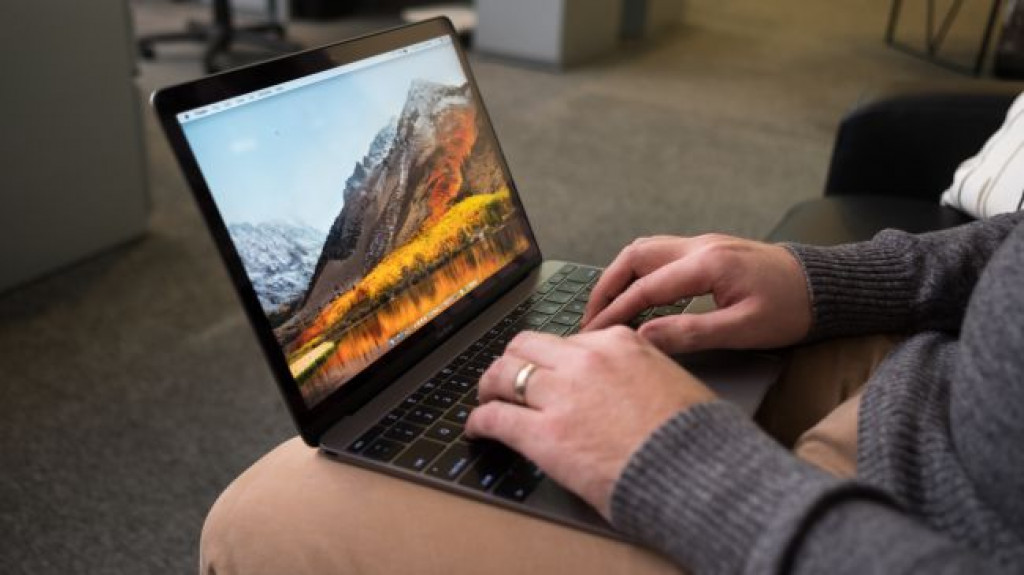
We disliked
Frankly, the price of this laptop should be at least 100 bills less regardless of currency, and a marquee performance feature of this laptop – 16GB of RAM capacity – simply costs too much.
Plus, the lack of ports and the middling 480p webcam just can’t be ignored any longer for a laptop that costs this much.
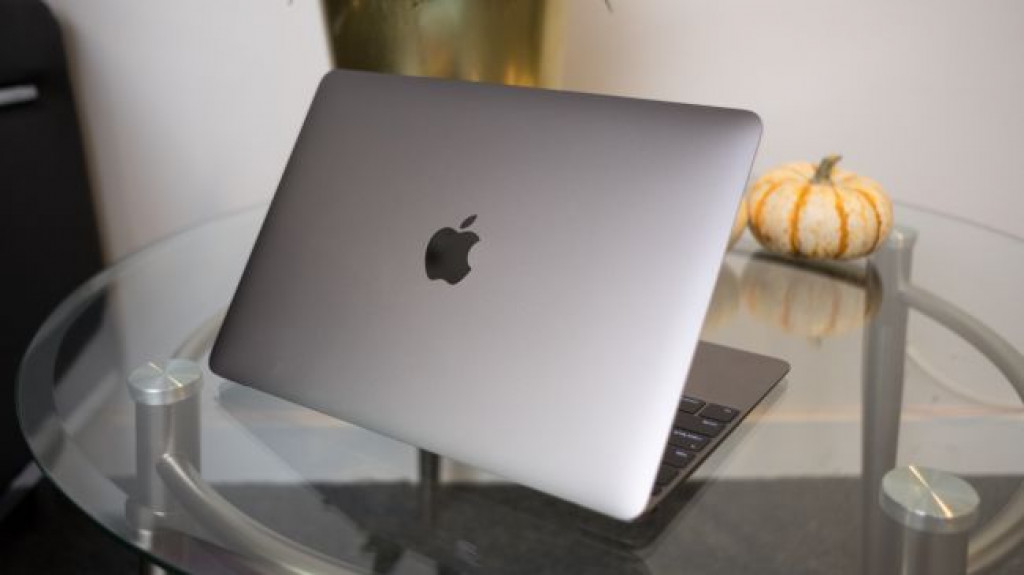
Final verdict
To be honest, given its exorbitant price for what’s on offer hardware-wise, we’re a bit annoyed that we like the 2017 12-inch MacBook as much as we do. Simply put, the laptop is rather easily out-classed in terms of pricing by many rivals in terms of brass tacks components, from storage capacity to ports to screen sharpness.
However, using the MacBook every day is where it manages to hold its ground against the competition. The latest MacBook design has proven to be inimitable over the last few years, delivering an experience that’s both speedy and portable in ways that most other laptops in its class just can’t.
Simply doing some work or browsing the internet with our legs crossed feels better on the MacBook than with most other laptops we’ve tested. Throwing this MacBook into a backpack – and maybe even forgetting the charger – feels like nothing is in there. Yet, what comes out is a device that wakes up in the blink of an eye and won’t slow down short of gaming or intense graphical editing work.
If you can get past a price tag that’s high even for Mac fans, then prepare to enjoy what’s surprisingly the best MacBook in years – Pro or otherwise.
Source: techradar.com






































